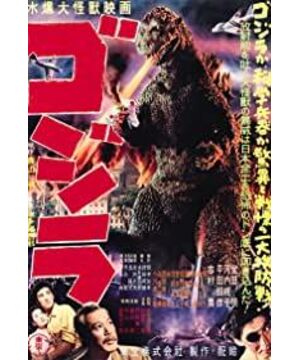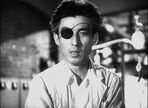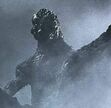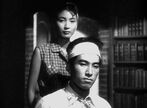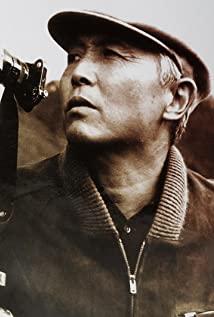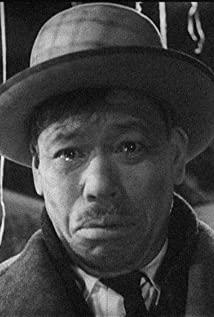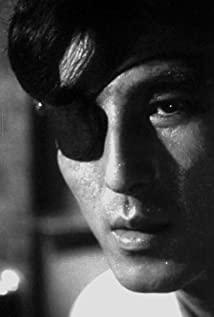there was a resurgence of the special film in recent years. Last year, “New Godzilla” was among the top ten of Japan's “Cinema Times” last year. The second in the single row is second only to "In This Corner of the World"; the
previous Hollywood blockbuster "King Kong: Skull Island" broke the 1 billion box office in the mainland, which has caused a burst of monster fever. The islands have monsters of different sizes and shapes. They are loved by many audiences.
Looking back at the most famous monster in the history of film, the King Kong created by Merian C. Cooper (1893-1973) must be one of them. Standing next to it is Godzilla from across the ocean, and its creator is Japanese monster master Eiji Tsuburaya (1901-1970).
With the advancement of today's visual special effects technology, it can be said that film creation has reached a state that can only be imagined and cannot be achieved.
However, before the 1980s, film artists without the help of digital technology could only fully use their brains and supplemented by their dexterous hands to bring audiences unconstrained and shocking visual images through real shots.
As an important branch of physical model special effects, Japanese special effects movies have infected generations of audiences and creators with unique styles. Among them, Tsuburaya Eiji created two classics of "Godzilla" and "Ultraman". The enduring image is known as the god of special photos in Japan, and Ray Harryhausen (1920-2013) and Stan Winston (1946-2008) are among the greatest visual effects masters in the history of world cinema.
Today’s big directors George Lucas, Spielberg, Cameron, Tim Burton, etc. have all been influenced by him, and the director of the latest version of "Godzilla" Garris Edwards also honored him as Idol.
Tsuburaya Eiji was born in Sukagawa City, Fukushima Prefecture in 1901. He loved airplanes since he was a child (similar to Hayao Miyazaki) and dreamed of becoming a pilot. His early experience was very bumpy. First he studied in aviation school and then was forced to transfer to electrical engineering school. As a man of engineering and a technical house, he likes to be alone. Silently invented playing machinery (Spielberg, Cameron are the same), because he was good at making toys, he entered the film industry by chance and started his career as a photographer.
Eiji worked in Shochiku, Nikkatsu and other small companies successively. It was not until 1937 that he entered Toho (Tokyo Photographic Office) to stabilize and truly usher in the beginning of his career. He was able to display his talents in special effects photography. It has been more than ten years since he entered the film industry.
With the intensification of the Second World War, the development of the entire Japanese film industry was greatly hindered. Toho continued to survive by shooting documentaries for the military. Eiji, who was in a special period, also participated, but it was the shooting of these images. Later, it caused him a lot of trouble and even made him unemployed.
One of the films has to be mentioned-"The Great Battle in Hawaii" (1942) in which he acted as a stunt photographer.
In the absence of wartime video footage, Tsuburaya led the technical team to recreate the scene of the Japanese raid on Pearl Harbor using huge pools, realistic model props, and techniques such as hanging wires, synthesis, and slewing devices (commonly known as the blind method). It caused a great response, and Eiji also realized his dream of being a pilot.
However, due to the fact that the picture was too real, Eiji was later called by the US military to talk after Japan surrendered, believing that he was directly involved in the Fascist War.
Although Eiji had always explained that it was a special photo, but the US military still didn't believe it, so in 1948 he was finally relieved of his position in Toho, and Eiji once again became an unemployed vagrant.
Although it was an unfortunate incident, it also proved that Eiji Tsuburaya's special shooting technology had reached a very high level at the time.
Speaking of which, I have to talk about the relationship between Tsuburaya Eiji and China.
In fact, as early as 1936 before entering Toho, the film he took part in for the first time in stunt shooting was "Xintu" (produced by Kawakita Nagamasa, starring Setsuko Hara), which intensified anti-Japanese sentiment in China, but this was a political issue. , The artist behind the scenes is innocent.
After the war, "The Legend of the White Snake" (1956, Toyota Shiro), which he was in charge of special effects photography, became popular in Hong Kong, which directly stimulated Shaw Brothers to shoot his own "The Legend of the White Snake" (1962, Yue Feng). Li Hanxiang took the initiative to pay a large price to hand over the special effects to the team of Eiji Tsuburaya in Japan during the filming of "Liang Shanbo and Zhu Yingtai" (1963).
The "Booming Grave" and "Ascension" scenes at the end of Li Hanxiang's version of "Blessings of Love" are famous special effects conceived by Tsuburaya Eiji. Even if they are viewed now, they are still not out of date. This has become a distinctive feature of the film exchanges between Hong Kong and Japan in the 1960s. illustration.
In the 1970s, Shaw followed the example of the Japanese special film and produced "Chinese Superman" (1975) and "The Gorilla King" (1977), while the Taiwanese contributed to the novel "Guan Gong vs. Aliens" movie. "(1976).
Hong Kong geek director Peng Haoxiang praised "Guan Gong vs. Aliens". Not only did he dug up the last set of copies, he also spent a lot of money to repair it. It was a rescue of the samples of Chinese-language special film. In ", a child’s dream is also used to pay tribute to the special Japanese monster film.
In my personal impression, the many monster images shown in the "A Chinese Ghost Story" series directed by Cheng Xiaodong also have an obvious Japanese special shooting style.
A little digress, and back to the above, Eiji Tsuburaya, who was expelled from Toho, was left at home and could only do some temporary work.
Just like Li Ang, who stayed at home for six years, Eiji did not give up his professional studies during this period, and often thought about special shooting creativity.
But Eiji was more fortunate than Ang Lee. Although there was a US military ban at the time, the old company Toho was still secretly continuing to cooperate with Eiji, such as letting him produce the company's opening animation.
After entering the 1950s, the United States ended its occupation of Japan and lifted the policy of public exile. So in 1952, Toho honestly invited Tsuburaya Eiji back to the company. It was during this period that he met a competent partner in the future. Honda Inoshiro (1911—1993).
With a stable creative environment and a close work partner, this filmmaker, who has been over 50 years old and has experienced countless twists and turns, is finally about to exert his greatest energy in the latter part of his life. Born years later!
In fact, before "Godzilla" appeared, the Americans had already filmed "Atomic Monster" (1953), which was about an atomic bomb experiment conducted in the polar circle, releasing 140 million sleeping in the ice. The dinosaur of 1 year, this dinosaur ran to New York City to invade and cause a huge panic.
The story mode of "Godzilla" is basically copied from this American movie, but it has achieved far beyond the former. The reason is that the domestic social background and the aspirations of the people at that time must be a prerequisite, but Eiji Tsuburaya's Creative design is also a great contribution.
For the first time in film history, he used the special shooting technique of putting actors in costumes instead of the frame-by-frame shooting method of "King Kong" (1933) to shoot monsters/disaster themes, and gave Godzilla this on the screen. The behemoth is so flexible that it aroused strong curiosity of the audience after being exported to the United States, because such natural and smooth movements must not be understood by those Americans who are accustomed to stop motion animation.
In addition to technological innovation, Tsuburaya also emphasized the emotion and character of monsters, just as his partner Inoshiro Honda said: monsters are born too tall, too strong, and too heavy, that is their tragedy.
"Godzilla" was not made for pastime and entertainment from the beginning. It is an adult, serious reflection film. "Godzilla" is a huge and small, passive and pitiful tragic image.
"Godzilla" is the second turning point in Tsuburaya Eiji's film career. It established his position as a generation of special effects masters. At the same time, it also brought to the forefront the photographers who have long been unknown behind the scenes. The audience can no longer ignore theirs. exist.
Tsuburaya Eiji was promoted to special effects supervisor, tied with director. Just as a group of excellent action directors in the Hong Kong film industry in the late 1970s, such as Liu Jialiang and Sammo Hung, were successively upgraded to action directors. These professional talents with stunts have become the dazzling presence in the film production team.
After "Godzilla" hit the scene, Tsuburaya continued his special photo shoot.
Perhaps it was the rough experience in the past that made him feel that he wasted too much good time, so he plunged into his monster world with high creative enthusiasm in his later years.
After "Godzilla", a series of "Pull" monsters appeared one after another, such as the representative "Larton" (1956), "Mothra" (1961), and "The Three Big Monsters" (1964) ; There are also "King Kong vs. Godzilla" (1962) associated with "King Kong" and the mechanical version of "King Kong Escape" (1967).
In 1963, the 62-year-old Tsuburaya Eiji established his own production company-Tsuburaya Co., Ltd., and since then ushered in the third turning point in his career. This time, he turned his attention from the big screen to the television field (also with The decline of movies at that time was related to the rise of television).
In 1966, the company’s entrepreneurial work, the series "Alt Q" directed by him, received super ratings as soon as it was broadcast. "Widely welcomed by children, it immediately became a popular social phenomenon and has been popular ever since.
In 1967, Eiji Tsuburaya continued to personally direct "Ultra Seven", which was also his last directorial work. In the last two years of his life, he also participated in the visual special effects of the war films "Fifty Six Yamamoto" (1968) and "The Great Battle in the Sea of Japan" (1969).
Due to the long-term overload of work in his later years, Tsuburaya Eiji died in 1970, at the age of 69, a generation of masters suddenly fell. (Another one who created countless classic model special effects masters such as "Terminator", "Alien 2", "Edward Scissorhands" and "Jurassic Park" died when he was only 62 years old. Film people really want Pay attention to your body)
More than forty years have passed, "Godzilla" is still being filmed, not only in Hollywood, but Anno Hideaki also released the Japanese local version of "New Godzilla" again after the series paused for 12 years. , And won praise from domestic audiences.
Although it is now possible to use advanced computer special effects to create infinitely realistic monster images like Hollywood, Hideaki Anno still deliberately restored the special texture of the 1954 version, paying tribute to Tsuburaya Eiji.
"Ultraman"'s film and television series also continue to this day. In Sukagawa City, the hometown of Tsuburaya, Ultraman's image is almost everywhere, becoming a unique urban culture here.
Behind the business cards of government employees is the Ultraman logo, and license plates designed for this can be seen everywhere on the street, and even the wooden fish knocked by the monks in the temple are designed according to Ultraman's face.
At the moment when Hollywood special effects blockbusters are popular all over the world, perhaps watching these old films shot in traditional manual methods will feel a little false and clumsy, but it is the persistent exploration of early film artists represented by Tsuburaya Eiji that makes today's films possible. The increasing advancement of special effects technology has inspired so many younger filmmakers to invest in this industry.
At the same time, it also enlightens us: no matter how advanced CG technology is, model special effects will always have its own unique charm. I hope that the special film created by Tsuburaya Eiji can continue.
View more about Godzilla reviews


